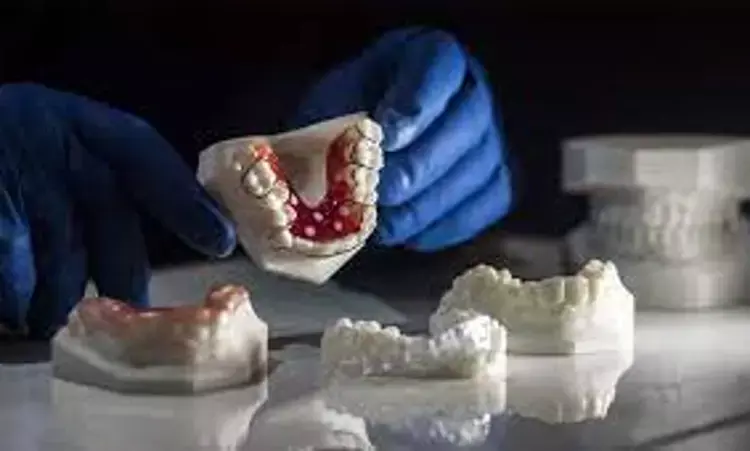- Home
- Medical news & Guidelines
- Anesthesiology
- Cardiology and CTVS
- Critical Care
- Dentistry
- Dermatology
- Diabetes and Endocrinology
- ENT
- Gastroenterology
- Medicine
- Nephrology
- Neurology
- Obstretics-Gynaecology
- Oncology
- Ophthalmology
- Orthopaedics
- Pediatrics-Neonatology
- Psychiatry
- Pulmonology
- Radiology
- Surgery
- Urology
- Laboratory Medicine
- Diet
- Nursing
- Paramedical
- Physiotherapy
- Health news
- Fact Check
- Bone Health Fact Check
- Brain Health Fact Check
- Cancer Related Fact Check
- Child Care Fact Check
- Dental and oral health fact check
- Diabetes and metabolic health fact check
- Diet and Nutrition Fact Check
- Eye and ENT Care Fact Check
- Fitness fact check
- Gut health fact check
- Heart health fact check
- Kidney health fact check
- Medical education fact check
- Men's health fact check
- Respiratory fact check
- Skin and hair care fact check
- Vaccine and Immunization fact check
- Women's health fact check
- AYUSH
- State News
- Andaman and Nicobar Islands
- Andhra Pradesh
- Arunachal Pradesh
- Assam
- Bihar
- Chandigarh
- Chattisgarh
- Dadra and Nagar Haveli
- Daman and Diu
- Delhi
- Goa
- Gujarat
- Haryana
- Himachal Pradesh
- Jammu & Kashmir
- Jharkhand
- Karnataka
- Kerala
- Ladakh
- Lakshadweep
- Madhya Pradesh
- Maharashtra
- Manipur
- Meghalaya
- Mizoram
- Nagaland
- Odisha
- Puducherry
- Punjab
- Rajasthan
- Sikkim
- Tamil Nadu
- Telangana
- Tripura
- Uttar Pradesh
- Uttrakhand
- West Bengal
- Medical Education
- Industry
3D printing will have a bright future in dentistry: Study

3D printing will have a bright future in dentistry, according to a study published in Scanning.
In 1986, Charles Hull introduced the first three-dimensional (3D) printing technology, and the industry developed many different manufacturing technologies, which have been applied to numerous fields. In 1986, Hull patented stereolithography (SLA) and built and developed a 3D printing system. In 1990, Scott Crump received a patent for fused deposition modelling (FDM). Since then, 3D printing has been increasingly progressing
Three-dimensional (3D) printing technologies are advanced manufacturing technologies based on computer-aided design digital models to create personalized 3D objects automatically. They have been widely used in the industry, design, engineering, and manufacturing fields for nearly 30 years. Three-dimensional printing has many advantages in process engineering, with applications in dentistry ranging from the field of prosthodontics, oral and maxillofacial surgery, and oral implantology to orthodontics, endodontics, and periodontology.
This review provides a practical and scientific overview of 3D printing technologies. First, it introduces current 3D printing technologies, including powder bed fusion, photopolymerization molding, and fused deposition modeling. Additionally, it introduces various factors affecting 3D printing metrics, such as mechanical properties and accuracy.
Findings of the review:
The 3D printing technologies can quickly accept CAD data. Moreover, it can rapidly manufacture single and small-batch parts, new samples, complex shape products, molds, and models [15]. It has many advantages, such as high material utilization, high economic benefits, and the production of certain scale products on demand. However, it still has several disadvantages, such as high cost of processing and material and time-consuming postprocessing. Still, in general, 3D printing has been successfully applied in the medical field.
This review found that there are three main 3D printing technologies, including powder bed fusion (PBF), light curing, and fused deposition modeling (FDM). The factors affecting the accuracy of 3D printing including process parameters and material composition will also be discussed. Finally, this review describes the applications in dentistry of 3D printing in detail, including manufacturing working models and primary applications in the fields of prosthodontics, oral and maxillofacial surgery, and oral implantology. The 3D printing technologies have the advantages of high material utilization and the ability to manufacture a single complex geometry; nevertheless, they have the disadvantages of high cost and time-consuming postprocessing.
Thus, the researchers concluded that the development of new materials and technologies will be the future trend of 3D printing in dentistry, and there is no denying that 3D printing will have a bright future.
Reference
A Review of 3D Printing in Dentistry: Technologies, Affecting Factors, and Applications by Yueyi Tian et al. published in the Scanning.
https://www.hindawi.com/journals/scanning/2021/9950131/
Dr. Shravani Dali has completed her BDS from Pravara institute of medical sciences, loni. Following which she extensively worked in the healthcare sector for 2+ years. She has been actively involved in writing blogs in field of health and wellness. Currently she is pursuing her Masters of public health-health administration from Tata institute of social sciences. She can be contacted at editorial@medicaldialogues.in.
Dr Kamal Kant Kohli-MBBS, DTCD- a chest specialist with more than 30 years of practice and a flair for writing clinical articles, Dr Kamal Kant Kohli joined Medical Dialogues as a Chief Editor of Medical News. Besides writing articles, as an editor, he proofreads and verifies all the medical content published on Medical Dialogues including those coming from journals, studies,medical conferences,guidelines etc. Email: drkohli@medicaldialogues.in. Contact no. 011-43720751


